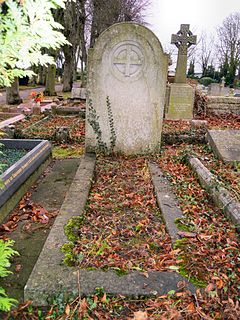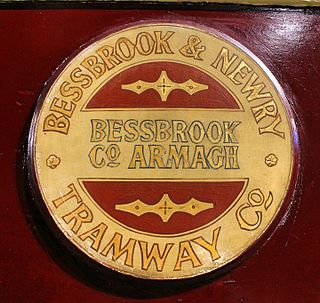
The Heaton Park Tramway is a heritage tramway running old trams as a visitor attraction in Heaton Park, Manchester.

Ian Allan Publishing is a UK publisher, established in 1942, which specialised in transport books. It was founded by Ian Allan (1922–2015).

The Kingston upon Hull tramway network was a network of 4 ft 8 1⁄2 instandard gauge tram lines following the five main roads radially out of the city centre of Kingston upon Hull, East Riding of Yorkshire, England. Two of these lines went west, and two east. The fifth went to the north, and branched to include extra lines serving suburban areas. Additionally a short line linked the city centre to the Corporation Pier where a ferry crossed the Humber Estuary to New Holland, Lincolnshire.

Lancashire United Transport (LUT) was a tram, bus and trolleybus operator based at Howe Bridge in Atherton, 10 miles north west of Manchester. It had the distinction of being the largest independent bus operator in the United Kingdom until its acquisition by the Greater Manchester Passenger Transport Executive in 1976.

Warrington Corporation Tramways was the owner and operator of an electric tramway system in the early 20th century serving the town of Warrington, at the time a county borough of Lancashire, England.

The Rothesay and Ettrick Bay Light Railway was a narrow gauge electric tramway on the Isle of Bute, Scotland.

Greater Manchester bus route 192 runs between Hazel Grove and Piccadilly Gardens. It is operated by Stagecoach Manchester.
The Manchester Carriage and Tramways Company was incorporated in 1880, the result of a merger of the Manchester Suburban Tramways Company and the Manchester Carriage Company, to provide horse-drawn tram services throughout Manchester and Salford, England, and surrounding districts. Although the 1870 Tramways Act authorised local authorities to construct tramways, it prevented them from operating tram services, so the tramways were leased out to private companies who operated them on their behalf. Those companies also had the right to construct their own tramways.
Between 1901 and 1949 Manchester Corporation Tramways was the municipal operator of electric tram services in Manchester, England At its peak in 1928 the organisation carried 328 million passengers, on 953 trams, via 46 routes, along 292 miles (470 km) of track.
The Manchester Suburban Tramways Company (MSTC) was set up in 1877 to provide horse-drawn tram services throughout Manchester and Salford, in England. The company's first tram service, which was also a first for Manchester, ran on 17 May 1877. The MSTC was merged with the Manchester Carriage Company in 1880 to form the Manchester Carriage and Tramways Company. The initial board of directors comprised Daniel Busby, William Turton, John Greenwood, and Benjamin Whitworth.

Manchester Carriage and Tramways Company L53 is the only surviving complete Eades horse tram. It was built in 1877 for the Manchester Carriage and Tramways Company.
The Brill Tramway, also known as the Quainton Tramway, Wotton Tramway, Oxford & Aylesbury Tramroad and Metropolitan Railway Brill Branch, was a six-mile (10 km) rail line in the Aylesbury Vale, Buckinghamshire, England. It was privately built in 1871 by the 3rd Duke of Buckingham as a horse tram line to transport goods between his lands around Wotton House and the national railway network. Lobbying from residents of the nearby town of Brill led to the line's extension to Brill and conversion to passenger use in early 1872. Two locomotives were bought for the line, but as it had been designed and built with horses in mind, services were very slow; trains travelled at an average speed of only 4 miles per hour (6.4 km/h).

William Henry Gaunt was an English transport engineer who began his working life developing and building gas-powered trams. He was educated at Manchester Grammar School before joining the Ashbury Company in Manchester as an apprentice. The works at Ashbury supplied the trams for Britain's first gas-powered tramway, the Blackpool, St Annes and Lytham tramway, operated by the British Gas Traction Company. Gaunt transferred to the tramway company in 1896, and then became manager of a similar gas-powered scheme at Trafford Park in 1896. Following the financial collapse of the Gas Traction Company in 1898 Gaunt was appointed manager of Trafford Park's gas and electric tramways, a position he held until 1905, when the operation of the electric line was taken over by the corporations of Manchester and Salford.
South Lancashire Tramways was a system of electric tramways in south Lancashire authorised by the South Lancashire Tramways Act of 1900. The South Lancashire Tramways Company was authorised by the act to build over 62 miles (100 km) of track to serve the towns between St Helens, Swinton, Westhoughton and Hulton Lane where the Bolton Corporation system ended. The system was the largest standard-gauge electric tramway outside London.

The United Electric Car Company was a tramcar manufacturer from 1905 to 1917 in Preston, Lancashire, England.

The Blackpool and Fleetwood Tramroad operated a tramway service between Blackpool and Fleetwood between 1898 and 1920.

The Bessbrook and Newry Tramway operated a 3 ft narrow gauge, hydro-electrically powered tramway transporting passengers and freight between Bessbrook and Newry in Northern Ireland between 1885 and 1948.
The Amalgamated Association of Tramway and Vehicle Workers was a trade union representing workers on public transport in the United Kingdom.














